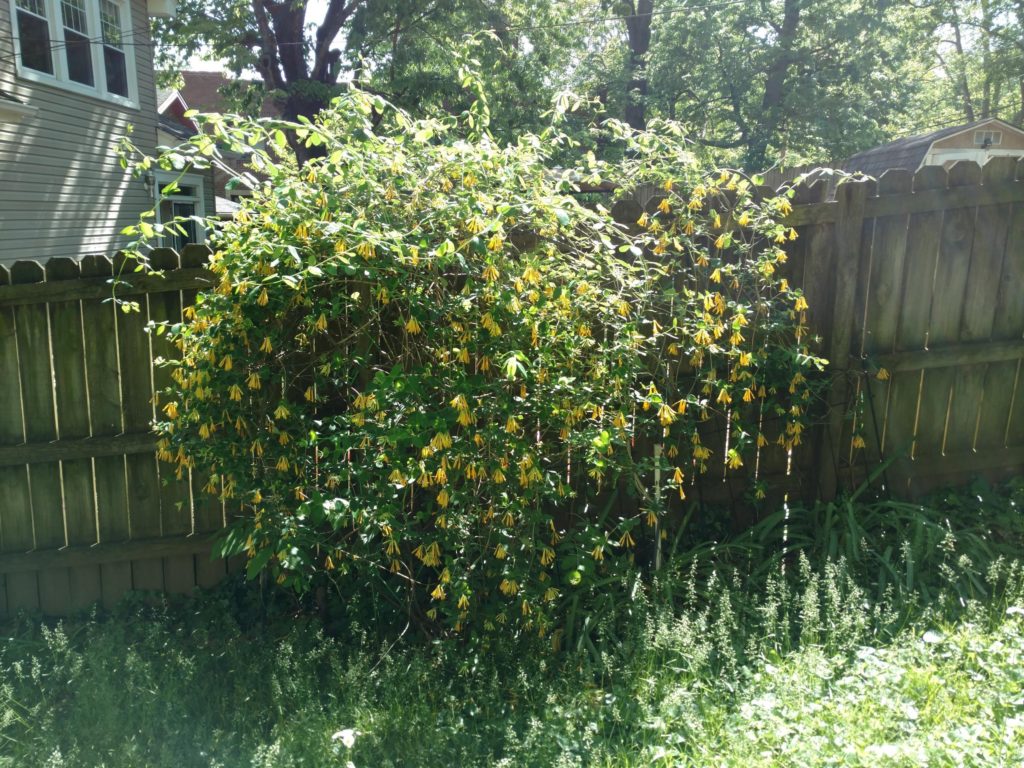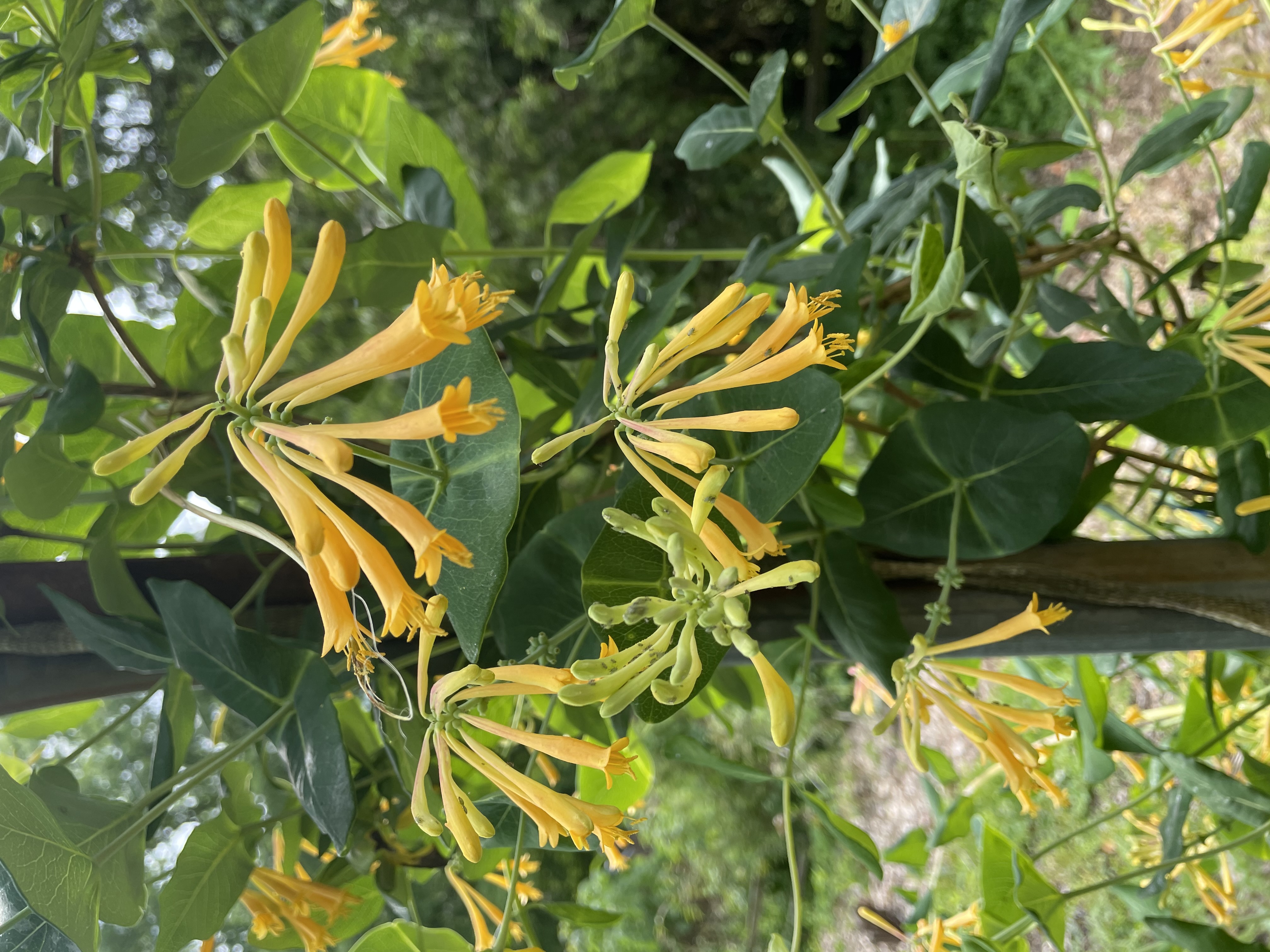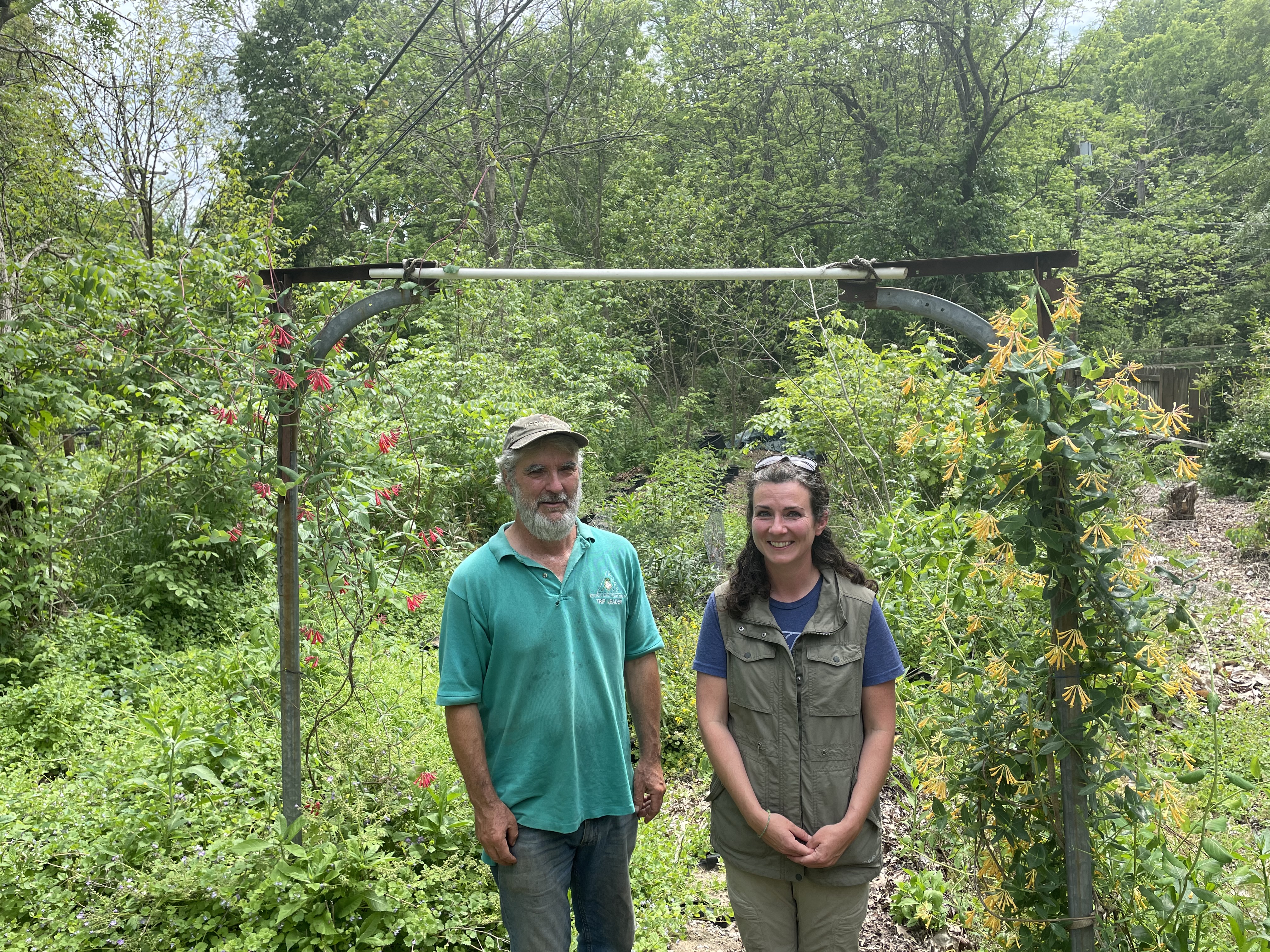Lonicera sempervirens f. sulphurea, a yellow-flowered form of the red native honeysuckle
By Alicia Bosela, owner of Ironweed Native Plant Nursery
The native species of trumpet honeysuckle is a deciduous woody vine that typically grows to about 15 feet. It produces red tubular flowers with a yellow throat and is pollinated by hummingbirds and a variety of insects. Ornamental uses include trellises, fences and as a ground cover. Trumpet honeysuckle differs from native yellow honeysuckle (Lonicera flava) in that L. flava is not known to occur in Kentucky and has distinctly different shaped flowers.


While much of our wild flora is at risk from various human activity, the beautiful, red-flowered trumpet honeysuckle can still be found if one is doggedly persistent in searching. One such pursuer of native plants, Neville Crawford, located what was clearly a trumpet honeysuckle that was completely yellow and appeared to be growing in natural habitat within Mahr Park in Madisonville, Kentucky. John Swintosky, Senior Landscape Architect at Louisville Metro Public Works, discovered a yellow trumpet honeysuckle growing in Iroquois Park at least 15 years ago and confirmed its presence again in September 2021. This yellow form was reported in Iroquois Park in 1945 by P.A. Davies. Botanist Julian Campbell also encountered the yellow form in Boyle County, Kentucky.

Were these plants naturally occurring color variants of the red trumpet honeysuckle or an escape from cultivation? Britton and Brown’s Illustrated Flora of the Northern United States mentions the yellow form as early as 1913. The yellow form has been noted for sale in catalogues as early as 1938 and is likely “within the range of phenotypic plasticity for the species,” according to the New York Botanical Garden (personal communication). Therefore, this is almost certainly a natural yellow form of the typically red trumpet honeysuckle. How interesting!
Editor’s Note: You can see the yellow variety at Salato Native Wildlife Education in Frankfort, Kentucky at the headquarters of Kentucky Department of Fish & Wildlife Resources in the backyard exhibit.
Alicia Bosela owns Ironweed Native Plant Nursery in Columbia Kentucky, a certified woman-owned business. Before opening her own nursery, she was the Assistant Director of Clay Hill Memorial Forest Environmental Education Center. You can contact her at www.ironweednursery.com.
